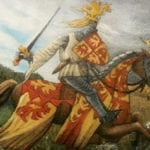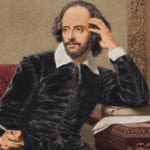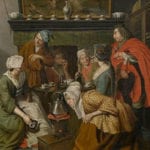 Music
Music  Music
Music  History
History 10 Less Than Jolly Events That Occurred on December 25
 Weird Stuff
Weird Stuff 10 Funny Ways That Researchers Overthink Christmas
 Politics
Politics 10 Political Scandals That Sent Crowds Into the Streets
 Weird Stuff
Weird Stuff Ten Bizarre Facts About The Doge Meme
 Our World
Our World 10 Ways Your Christmas Tree Is More Lit Than You Think
 Movies and TV
Movies and TV The 10 Coolest Stars to Set Sail on The Love Boat
 History
History 10 Things You Didn’t Know About the American National Anthem
 Technology
Technology Top 10 Everyday Tech Buzzwords That Hide a Darker Past
 Humans
Humans 10 Everyday Human Behaviors That Are Actually Survival Instincts
 Music
Music 10 Surprising Origin Stories of Your Favorite Holiday Songs
 History
History 10 Less Than Jolly Events That Occurred on December 25
 Weird Stuff
Weird Stuff 10 Funny Ways That Researchers Overthink Christmas
Who's Behind Listverse?

Jamie Frater
Head Editor
Jamie founded Listverse due to an insatiable desire to share fascinating, obscure, and bizarre facts. He has been a guest speaker on numerous national radio and television stations and is a five time published author.
More About Us Politics
Politics 10 Political Scandals That Sent Crowds Into the Streets
 Weird Stuff
Weird Stuff Ten Bizarre Facts About The Doge Meme
 Our World
Our World 10 Ways Your Christmas Tree Is More Lit Than You Think
 Movies and TV
Movies and TV The 10 Coolest Stars to Set Sail on The Love Boat
 History
History 10 Things You Didn’t Know About the American National Anthem
 Technology
Technology Top 10 Everyday Tech Buzzwords That Hide a Darker Past
 Humans
Humans 10 Everyday Human Behaviors That Are Actually Survival Instincts
10 Mysterious Cats Of Great Britain
Big cats, such as lions, tigers, and leopards, are not native to the British Isles. The most fearsome feline known to the British are the wildcats (Felis silvestris silvestris) that have made a cozy home in the Highlands of Scotland. Despite this fact, Great Britain is a treasure trove of big cat sightings. England is particularly active, with rural felines populating areas like Dartmoor and West Sussex. Most of these reported sightings fall into the “mystery cat” category, which is usually an area occupied by folklorists and cryptozoologists.
Many believe that the prevalence of big cat sightings in Great Britain is due to the tradition of “black dogs” or other supernatural hounds that appear frequently in local legends. However, some of these sightings have been taken seriously. For example, the British Royal Marines were dispatched to Devon and Somerset in 1983 in order to carry out Operation Beastie—a campaign designed to capture the Beast of Exmoor. The creature had successfully evaded the Queen’s best sharpshooters, but the troops did manage to get a good glimpse at what they believed to be a large black panther.
Since 1983, eyewitness accounts of mystery cats in Great Britain have only increased and may prove there are more things lurking in the woods than what is commonly accepted.
10The Fiskerton Phantom
In August 1997, the Fiskerton Phantom was first spotted by four young South Yorkshire girls. Nicki Handley, Nicola Proctor, Rachel Rowan, and Joanna Brogan were enjoying a walk near the Lincolnshire village of Fiskerton when they saw the 1.2-meter-tall (4 ft) creature dinning on dead animal carcasses. The girls described the mysterious animal as “bear-like” with black fur. Furthermore, the girls told reporters that the beast had large teeth and claws. They even claimed that the animal left footprints in the dirt after finishing its pheasant dinner.
Unbeknownst to most outside of Lincolnshire, reports of a similar creature had been made earlier in the year. In most of the cases, the mysterious animal was described as being either bear-like or akin to a large, predatory cat. Since 1997, Fiskerton Phantom sightings have been almost nonexistent. Today, the Fiskerton Phantom is better known for the character Fiskerton on the animated television show The Secret Saturdays.
9Beast Of Bodmin Moor
Even without the beast, Cornwall’s Bodmin Moor would be a terrifying place. Although officially designated as one of the “Areas of Outstanding Natural Beauty,” Bodmin Moor is a desolate granite moorland covered with windswept heather. Bodmin Moor is also home to the Stripple Stones and the Trippet Stones, a prehistoric stone circle that is more or less a small-scale Stonehenge. It was in this environment that the Beast of Bodmin Moor stalked its prey and snacked on the area’s livestock.
The first reports of the creature surfaced in the 1990s. At that time, 60 eyewitnesses said that they had seen a panther-like animal with black fur and white-yellow eyes. It was widely stated that the animal was approximately 1–1.5 meters (3–5 ft) long. The British government took these reports so seriously that they opened an investigation in 1995. Although London asserted that they could not find any evidence of a panther living on Bodmin Moor, they didn’t rule it out, either.
Some people claimed that the beast attacked more than just sheep and cows. On October 26, 1993, Jane Fuller reported that she was struck on the head by an unknown animal while she was walking her dog on Bodmin Moor. Four years later, bite marks on livestock—along with unusual droppings—spurred amateur investigators into action. One of these investigators claimed that they saw what appeared to be a puma and its cub on the moor.
In December 2014, the Daily Mail released the files from the 1995 investigation to the public. In what had to be a deflating moment for cryptid hunters, the released documents showed that the beast was nothing more than a 30-centimeter-tall (12 in) cat.
8Fen Tiger Of Cambridgeshire
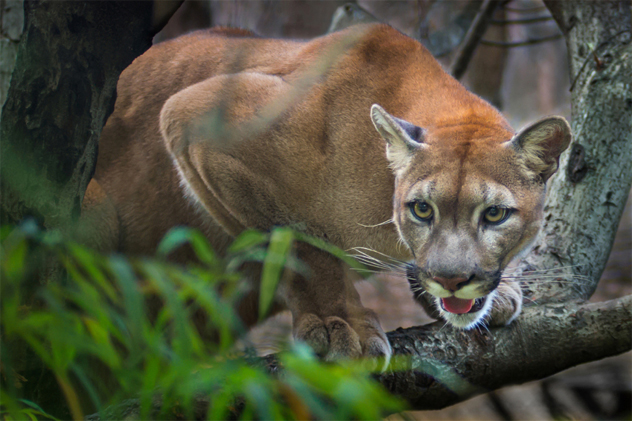
Two years before Operation Beastie, another large cat was seen prowling around the English countryside. Instead of the moors of the West country, this creature preferred the fens of Cambridgeshire. It was first seen in 1982 near the village of Cottenham. The Fen Tiger then went dormant for 12 years, until it was sighted again in 1994. William Rooker even captured what he believed to be the tiger on camera. Since then, the tiger has become a staple of eyewitness reports given to the Cambridgeshire police.
In 2010, a large, lynx-like animal was reported prowling around the fields of Little Eversden, Somersham. In 2013, a possible big cat was blamed for an attack on some sheep, while two other reports of a panther-like cat were made in Comberton and Melbourne. The sheer weight of all these reports had led members of the British Big Cat Society and other so-called experts to assert that the Fen Tiger was either a tiger or a puma that was released into the wild by an owner who had purchased the animal illegally. While many scoff at this notion, it remains true that people in Cambridgeshire continue to see the beast.
7Big Cats Of Monmouthshire
In August 2000, police in the Welsh town of Gwent issued a warning to residents to be on the lookout for a “leopard-like” animal that had previously attacked an 11-year-old boy named Josh Hopkins. The boy said that the animal had struck him while he and his brother were searching for their pet near their home in Trellech. While searching in a patch of tall grass, the big cat jumped up and struck Hopkins in the face with one of its front paws. The attack marred the child’s face with five bloody claw marks.
The story immediately received nationwide attention, and once again, big cat enthusiasts were quick to claim that a black panther was to blame. Other various media outlets used the ordeal to examine the phenomenon of big cat sightings in Great Britain. As for Wales, more than a dozen sightings around Gwent have been reported since 2011. The South Wales Police received 17 reports, all in 2013, and each one claimed that a black, panther-like cat was roaming the countryside.
6Big Cats Of The Cotswolds
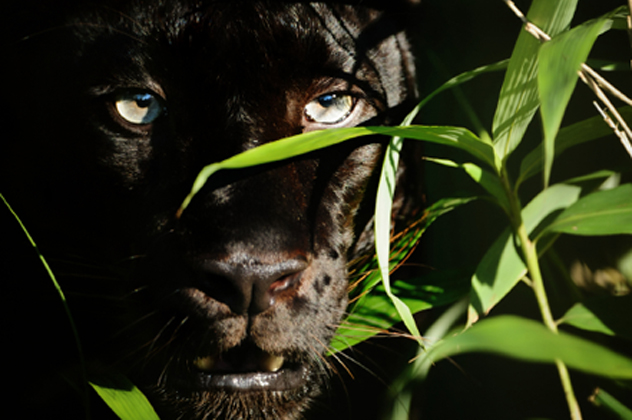
The Cotswolds of south-central England is a perfect destination if you’re seeking the quiet beauty of the British countryside. Tucked beneath the green, rolling hills of the Cotswolds are quaint houses with thatched roofs, stone exteriors, trappings of a bygone age . . . and several big cats that are currently terrifying residents.
As recently as 2015, many residents of the Cotswolds have come forward to claim that they have spotted a black panther or a panther-like creature. The sightings have mostly occurred near the towns of Cirencester and South Cerney, but one has stated that a large, black cat was prowling the land in front of Cirencester’s Roman amphitheater. Some Cotswolds residents have claimed that the big cats are responsible for the alarming number of attacks on the local deer population.
While the usual mixture of big cat enthusiasts and amateur sleuths have voiced their support for the theory that the cats are present in rural Great Britain, the Forestry Commission confirmed in 2009 that two of its agents had seen what they believed to be large panthers in the Forest of Dean in Gloucestershire.
5Big Cats Of Shropshire And Wales
Shropshire, on the border of Wales, sits in the heart of England’s big cat country. Between 2010 and 2015, 14 sightings were reported to the Dyfed-Powys police in nearby Wales, while one Shropshire resident claimed to have seen a panther-like animal in March 2014. Other eyewitnesses have told similar tales since 2009. In that same year, a wounded lamb was found in the Welsh town of Builth Wells. A year later, in the Shropshire border town of Oswestry, a large cat that was the size of a sheepdog was reported to the police. Other sightings have occurred in the towns of Telford, Meifod, and Llanidloes.
In 2008, the Shropshire Star newspaper released video footage taken by Billingsley farmer Shirley Lewis. The footage appeared to show a black cat calmly walking through the fields near their farm. Many claim that such animals are the descendants of the wild animals outlawed by the Dangerous Wild Animals Act of 1976, which was intended to halt the then-popular practice of keeping wild predators like tigers and lions as pets. A minority claimed that panthers were brought to the British Isles by the victorious Romans and then released into the wild. Another minority believed that the cats who haunt the British countryside are somehow connected with extraterrestrials, and some sightings have coincided with UFO reports.
4Beast Of Buchan
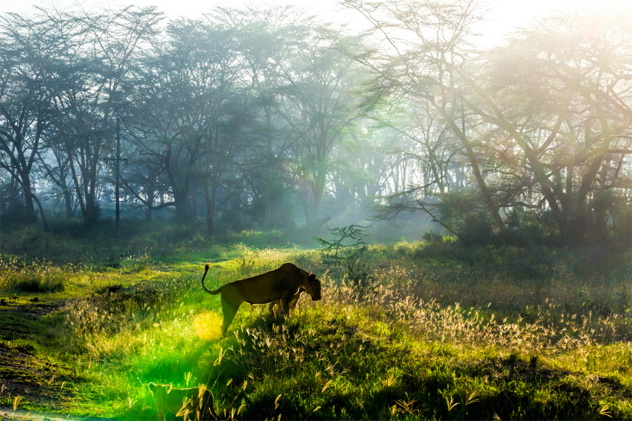
From as far back as the 1930s, the Buchan area of Scotland’s Aberdeenshire has been a focal point for big cat sightings, although Scottish wildcats have been known to traverse the fields of Aberdeenshire and Banffshire. Both of these towns border the Highlands, and eyewitnesses believe that the Beast of Buchan is far too large and long to be a wildcat. A 2006 video from Banffshire certainly seems to support this assertion.
In 2011, a recent transplant from Inverness named James Gray posted an eyewitness account on the Internet. Mr. Gray saw a large, black cat with a bushy tail while he was walking with his dog, Sophie, between the villages of Old Deer and Mintlaw at around 5:00 PM. According to his initial report and interviews, the animal crouched down, waited for a few seconds, and then trotted off.
Other spotters have described the beast as everything from an unusually large lynx to a black panther. Most firsthand accounts compare the beast to large dog breeds like greyhounds or Alsatian shepherds. George Redpath, a big cat enthusiast and wildlife liaison officer in Fife, believes that the Beast of Buchan is actually just one of some 50 cat species that live almost undetected in the Scottish wilderness.
3The Policeman And The Mystery Cat
On June 30, 2009, an off-duty Ministry of Defense dog-handler named Chris Swallow was helping a friend tend their garden in Helensburgh, Argyll, Scotland. Swallow noticed a large, black object moving near a railway line. His first thought that the creature was larger than a Labrador dog, longer than any native cat species, and had an abnormally long tail. Once Swallow noticed that the large cat was in danger of getting hit by an approaching train, he ran to warn it. It was at this point that he realized that he was in the presence of the fabled Coulport Cougar.
Swallow grabbed his cell phone and trained its camera on the beast. The phone recorded what appeared to be a black panther walking confidently along a set of train tracks. His footage quickly made the rounds and has since become a popular entry in the fast-growing list of big cat sightings in Great Britain.
2Beast Of Bevendean
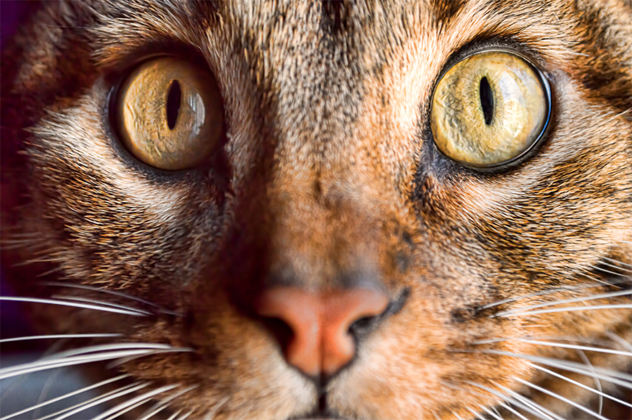
Dubbed the “Beast of Bevendean,” this cat has been spotted since 2008. In that summer, several witnesses came forward and claimed that they had seen a large, black cat in the woods near the city of Brighton and Hove. After they compared their accounts during a meeting at the Holy Nativity Church in Bevendean, the residents agreed that the animal posed a threat to their pets, and possibly their children.
On June 10 of the same year, Bevendean resident and dog owner Bill Batchelor claimed that a large, vicious cat had attacked his dog during their walk. Unlike the majority of accounts throughout Great Britain, Batchelor told Sussex police that a sandy-colored cat (not a black panther) with a gray muzzle had attacked his pet. In October 2010, a resident of Preston Park, Brighton, named Avis Carter claimed that she had spotted the Beast of Bevendean while she was picking apples on Bevendean Hill. Carter’s statement claimed that the large cat had tabby-like markings, and she said that the cat ran into the undergrowth once it noticed her presence.
In the winter of 2009, Debra Munn, a 56-year-old resident of Brighton, told members of the Sussex Big Cat Watch that the Beast of Bevendean was actually one of many pumas and lynxes that were naturally breeding in the area. Although not a widely held belief, Munn’s theory may explain why some reports offer different stories about the beasts’s appearance.
1The Lion Of Bedford

For the most part, big cat sightings all seem to point to the existence of black panthers in the forests and fields of Great Britain. A smaller minority of cases point to either lynxes or mountain lions as the culprits behind various sightings. Lions, on the other hand, are rarely sighted. That all changed in October 2012 when witnesses reported seeing a lion in a residential area near the town of Bedford. Six weeks prior to these reports, an “orange and brown” beast had caused a panic among Essex residents, who believed that a lion was on the loose near a camping site in Clacton. These reports were believable enough that the Essex police deployed armed officers and helicopters to the area in order to capture the animal. As it turned out, police located a large Maine Coon cat named Teddy Bear and decided that he was the cause of all the worry.
As for Bedford, the lion sightings began when two women were out walking their dogs and saw what appeared to be a lion lounging near a housing estate. Like the earlier panic in Essex, Beford’s lion was probably nothing more than a fat Maine Coon. Although far from the most valid sighting of a big cat in Great Britain, the Bedford case of 2012 may be the country’s most unique.
Benjamin Welton is a freelance writer based in Boston. His work has appeared in The Weekly Standard, The Atlantic, Listverse, Metal Injection, and other publications. He currently blogs at literarytrebuchet.blogspot.com.
